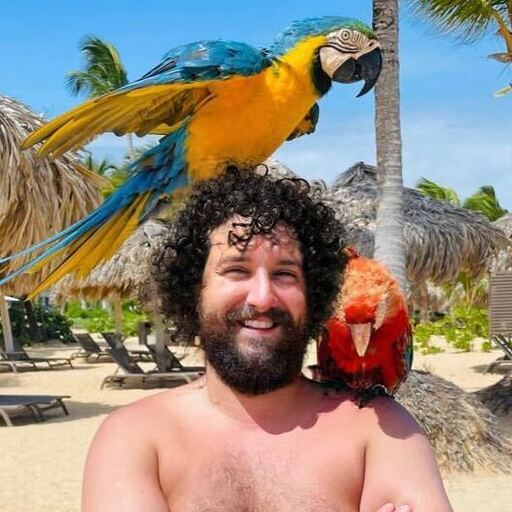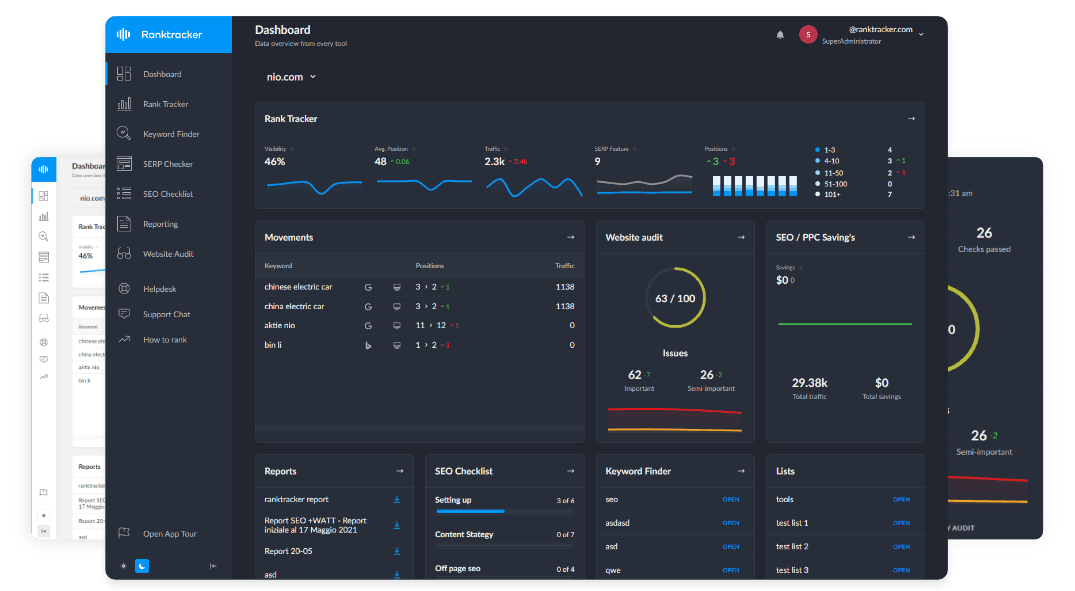Intro
Culinary tourism is one of the fastest-growing segments in the travel industry. From street food tours in Asia to wine-tasting trips in Europe, travelers are actively searching for food-focused experiences online. Without strong SEO, your tours risk being overshadowed by better-optimized competitors and major booking platforms.
With Ranktracker, you can identify profitable culinary travel keywords, track your search rankings, and optimize your content to connect with travelers ready to book their next food adventure.
Why SEO Matters for Culinary Travel & Food Tours
Strong SEO helps you:
-
Capture high-intent searches from travelers planning food-related trips
-
Compete with large OTAs and destination marketing sites
-
Increase direct bookings while reducing reliance on commission-heavy platforms
-
Build trust and authority as a local food and culture expert
Tip: Use Ranktracker’s Rank Tracker to monitor your most valuable tour and destination keywords.
Keyword Research: Target Food + Destination Searches
Food travelers often search for a specific cuisine or experience in a specific place.
Use Ranktracker’s Keyword Finder to discover terms like:
-
“food tour in [city]”
-
“wine tasting tour [region]”
-
“street food tour [destination]”
-
“cooking classes in [city]”
-
“gourmet food tours [country]”
-
“beer and brewery tours [location]”
-
“farm-to-table experiences [region]”
Segment keywords by:
-
Location: city, region, country
-
Experience: street food, fine dining, wine tasting, cooking classes, brewery visits
-
Audience: couples, families, solo travelers, corporate groups
-
Cuisine Focus: Italian, Japanese, Thai, French, fusion, regional specialties
On-Page SEO: Make Every Tour Page Mouth-Watering & Search-Optimized
Each tour page should focus on one experience and one main keyword.
On-page SEO essentials:
-
Title Tags: “Food Tour in [City] – Taste Authentic Local Cuisine”
-
URL:
/food-tour-[city]/or/wine-tasting-[region]/ -
Meta Descriptions: “Join [Company Name] for an unforgettable [City] food tour. Sample authentic dishes, meet local chefs, and discover hidden culinary gems.”
-
H1: Include main keyword and tour name
-
Image Alt Tags: “street food vendor serving local delicacy in [city]”
-
Schema Markup: Tour schema with pricing, duration, and schedule
-
CTAs: “Book Now,” “View Itinerary,” “Check Availability”
Preview your listing with Ranktracker’s SERP Simulator.
Content Marketing: Feed Curiosity and Build Appetite
Your blog should inspire travelers and help them plan their food-focused trip.
Content ideas:
-
“Top 10 Street Foods to Try in [City]”
-
“Best Wineries to Visit in [Region]”
-
“Beginner’s Guide to Cooking Classes Abroad”
-
“How to Pair Wine with Local Dishes in [Destination]”
-
“Farm-to-Table Experiences You Can’t Miss in [Region]”
-
“Ultimate Guide to Food Festivals in [Destination]”
Use Ranktracker’s AI Article Writer to produce engaging foodie travel content quickly.
Technical SEO: Make the Booking Process Smooth
Food travelers often research and book while on the go, so your site needs to be fast and mobile-friendly.
Run Ranktracker’s Web Audit to:
-
Optimize page speed for mobile and desktop
-
Fix broken links to tours and itineraries
-
Ensure a mobile-first design for easy browsing and booking
-
Secure your site with HTTPS for safe transactions
-
Streamline booking flows to reduce drop-offs
Visual SEO: Make Visitors Taste the Experience Through Photos
High-quality visuals are essential in culinary tourism.
The All-in-One Platform for Effective SEO
Behind every successful business is a strong SEO campaign. But with countless optimization tools and techniques out there to choose from, it can be hard to know where to start. Well, fear no more, cause I've got just the thing to help. Presenting the Ranktracker all-in-one platform for effective SEO
We have finally opened registration to Ranktracker absolutely free!
Create a free accountOr Sign in using your credentials
Tips:
-
File names:
street-food-tour-[city].jpg -
Alt text: “local chef preparing traditional dish in [city]”
-
Include photos of food, markets, cooking classes, and dining settings
-
Use short videos showing cooking demonstrations or wine pouring
-
Feature guest reactions and candid dining moments
Link Building: Collaborate Within the Food & Travel Community
Strategies:
-
Partner with travel bloggers and foodie influencers for reviews
-
Get listed in culinary tourism directories
-
Collaborate with local restaurants, wineries, and markets for backlinks
-
Pitch stories to food, wine, and lifestyle publications
-
Partner with tourism boards promoting culinary destinations
Monitor backlinks using Ranktracker’s Backlink Monitor.
Reviews & Social Proof: Build Trust with Hungry Travelers
Travelers book food tours based on authenticity and recommendations.
Ways to leverage social proof:
-
Display reviews from Google, TripAdvisor, and niche food travel sites
-
Feature testimonials with photos of guests enjoying the experience
-
Highlight awards, certifications, and press features
-
Share guest-generated food photography on your social media
-
Include chef and guide profiles to add personality and expertise
SEO Checklist for Culinary Travel & Food Tours
-
Target experience- and location-specific keywords
-
Optimize all tour pages for search and conversions
-
Publish content that blends food and travel storytelling
-
Maintain mobile-friendly booking pages
-
Use professional food photography and optimized visuals
-
Build links from food, wine, and travel industry sources
-
Promote reviews and awards prominently
-
Track keyword rankings and site health with Ranktracker
Conclusion
For culinary travel and food tour operators, SEO is the key ingredient in filling your bookings. By targeting the right keywords, showcasing your expertise through mouth-watering content, and ensuring a smooth booking process, you can attract food lovers from around the globe and turn online searches into unforgettable dining experiences.

